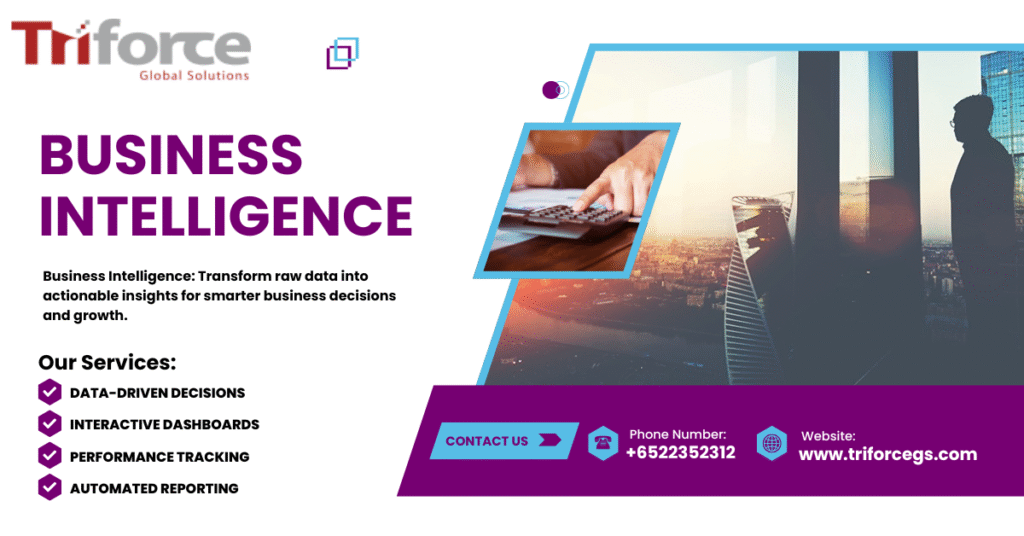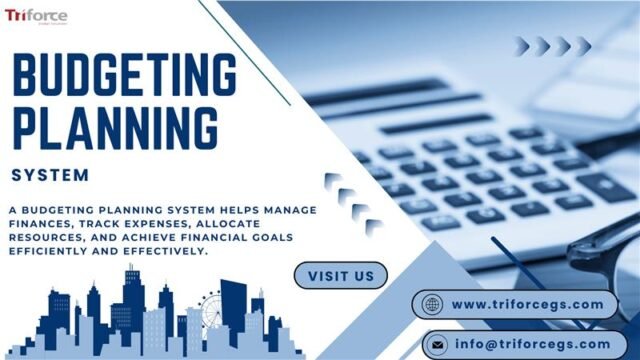Let’s face it; we all understand the struggle of having to predict the future based on data you’ve collected last year. It’s treacherous to rely solely on predictions and hope that nothing comes up at all that disrupts your forecast. But wouldn’t it be nice if we went the whole way and replaced guesswork with precision? That is exactly what we are able to achieve with a powerful budgeting planning system alongside a modern business intelligence tool.
We live in an age with fast paced advancement in technology, and as a result, traditional budgeting approaches are a thing of the past. Companies require instant insights and adaptability to change with the times. When coupled with a budgeting planning system, business intelligence creates a competitive edge. This is a game changing perspective. It doesn’t matter if you are a startup founder managing scanty finances, or a finance director of a multinational, embracing this powerful deal can shift and redefine how you plan and manage finances.
Why Traditional Budgeting Methods No Longer Work for Businesses
The antiquated method of budgeting—setting staunch annual goals using previous years’ numbers—is swiftly losing relevance. In our unpredictable economy, a budget set in January can be rendered useless by March. This misalignment results in organizational friction, with department heads operating under stale parameters and finance teams caught in a numbers-keeping runaway train.
This is exactly where a sophisticated budgeting planning system driven by business intelligence comes in and changes the game. Unlike rigid spreadsheets, these modern solutions allow for continuous optimization and recalculation. They fetch the organization’s data in real time; analyze it using complex algorithms, and present actionable decisions in visually appealing dashboards.
Take, for instance, the most common approach to budget variance analysis. More often than not, finance teams synthesize reporting data only to discover discrepancies with the budget days later. With business intelligence incorporated into your budgeting planning system, real-time alerts about major deviations and AI-powered recommendations would be the norm.
The Benefits of Business Intelligence On Your Planning Budget
By its nature, business intelligence focuses on turning unprocessed data into information that can be acted on. In the world of budgeting, this goes far beyond the mechanical adding and subtracting of figures. It means developing an understanding of the factors that drive your finances. A business intelligence-powered budgeting planning system doesn’t only inform you what transpired; it tells you why it happened and what the most probable scenarios are moving forward.
Budgeting planning system forecasts are sometimes termed as predictive budgeting, and that is one of the most useful. Traditional systems invariably look back in time and project for the future. Business intelligence systems focus on looking forward, for example, and emotional sentiment. With this, your budgeting planning system ensures that you are alerted in advance of impending cash flow challenges that could spiral out of control to underestimated difficulties, or pinpoint to you business expansion opportunities that you are likely to miss.
Another transformative feature is the modeling of various scenarios. With the right business intelligence tools, preparing and analyzing several budget scenarios can be completed within minutes. How about testing the feasibility of a new store and analyzing its impact towards the profit margin? Or what about estimating the financial outcomes of a probable takeover? An advanced budgeting planning system can construct and analyze these complex scenarios far ahead and provide leadership with the critical insights they need to make accurate business decisions.
Implementing an Intelligent Budgeting Planning System: Where to Start
A shift to a budgeting planning system, powered with business intelligence tools, may feel overwhelming at first, but it is considerably easier when approached in clearly defined steps. The first step is examining the existing budgeting approach to see what can be fixed and improved. Are the people responsible for budget preparation spending too much time trying to gather the necessary information? Are the prepared budgets consistently off? Do managers in charge of various departments complain that they do not have the necessary tools to flexibly manage their budgets? The implementation priorities will be determined based on these issues.
After that is choosing a technology platform. An ideal budgeting planning system must accompany your organization’s financial systems and still provide the business intelligence that is needed. Most cloud-based solutions offer the best flexibility and easiest implementation alongside automatic updates that provide the latest features.
Preparation of data is the most challenging and critical. Your business intelligence technologies cannot exceed the quality of the data you provide. This entails data cleansing, establishing a consistent method of categorization across departments, and maintaining quality. Organizations find that having this kind of process is the best method to streamline their charts of accounts and also rid outdated and redundant categories.
Addressing Issues Faced During the Implementation of Intelligent Budgeting
Organizations face issues even when the technology is sophisticated while implementing the budgeting planning system with business intelligence capabilities. One of the common problems is change aversion. This is very common with teams that work with legacy systems. This can be resolved by showcasing results that matter. For example, offering managers visibility of the expenses of their department in real-time, fulfilled in rapid return pilot programs, validates the change in adoption process with wins in budget submission times.
Another common challenge is obsolete technology. A lot of organizations keep their financial data in various places, for example, enterprise resource planning systems, customer relationship management systems, payroll systems or in departmental systems. In order to prepare a meaningful business intelligence based budgeting system, all known data sources have to be incorporated, which often requires complex building of cutoff integrations or data mining systems. In many cases this requires recourse from the IT team which in turn demands resource allocation, architectural planning, and requires absolute data fidelity and custodianship.
One of the most elusive yet important challenges is shifting the organizational mindset from static to dynamic budgeting. This cultural shift requires teaching and ongoing help to change the perception that frequent budgeting changes and updates are made out of failure, rather, are done in response to constantly changing conditions. This change in financial planning requires leadership, as they are the ones modeling this adaptive approach, which shapes the overall culture of the organization.

Advanced Techniques for Budgeting with Business Intelligence
As soon as you are through with the planning by budgeting system fueled by business intelligence, you may start digging into sophisticated system applications. One powerful approach is drivers based budgets that correlate operational targets with financial projections. This could be, for instance, a retailer who could associate marketing expenditure with the targeted customer acquisition rate or a manufacturer relating production cost to the planned unit volumes. This leads to budgets being less divorced from reality, more responsive to change, and easier to adjust.
Going a step further, spending prediction analytics involves the use of sophisticated algorithms to the ultimate the most optimal solutions and automating the prediction process by identifying the markers and noticing patterns based on learned behavior. Advanced functionality of your budgeting planning system could notice that specific expenses tend to spike under certain market scenarios like some departments regularly under predict certain cost categories. With such understanding comes accurate budgeting and helps better allocate resources.
Another sophisticated example is collaborative budgeting, which can integrate finance and operational silos. With suitable business intelligence resources, managers can monitor and analyze budgets across various divisions, including their own, in real time and run simulations. This shift reduces the finance department’s workload by streamlining processes, allowing for better workload distribution and increased efficiency.
Assessing the Effectiveness of Your Intelligent Budgeting System
As with any other critical investment, it is vital to analyze the effect of implementing budgeting planning systems with business intelligence. Some key performance indicators may include overall budgeting cycle duration, forecasted budget accuracy, and budget revision frequency. User satisfaction among department managers and finance personnel is also tracked by many organizations.
Another important KPI to highlight is, what we can term, “budget relevance”—the comparison of the budget business realities during the fiscal year. This is a key aspect that is often overlooked in traditional systems. Business intelligence paired with a budgeting planning system should ensure that the relevance remains significantly high.
Another notable metric is the amount of time saved on manual processes like gathering data and reconciliation. Finance teams have reported a greater than 50% reduction in time spent on data collection and reconciliation after deploying an intelligent budgeting planning system, allowing them to concentrate on more high level work such as strategic analysis and decision-making.
The Future of Budgeting: Where Business Intelligence is Taking Us
Looking forward, the relationship between business intelligence and budgeting planning systems will grow in importance. The concept of “continuous budgeting” is emerging, these are systems that self-refresh financial estimates and projections as fresh data become available, thus evolving the budget structure to the requirements of the business.
The systems involved will utilize artificial intelligence which will not only analyze data but will go a step further and recommend changes to the budget. Think of the possibility where your budgeting planning system proactively notifies you that a specific product line will outperform expectations and suggests the best ways to reinvest the forecasted profits.
An additional thrilling innovation is the use of external data streams in the budgeting process. For example, real-time economic indicators, commodity prices, or even weather forecasts could be incorporated in future systems to support the drawing up of context sensitive budgets. Such integration could be extremely valuable in sectors like agriculture, transport, or retail where external factors dually influence the finances of a hydra-headed organization.
Getting Started with Intelligent Budgeting: Practical First Steps
For organizations willing to embark on the journey to intelligent budgeting, the process begins with small, manageable tasks. Start with pinpointing a specific pain point in the budgeting process to be solved with business intelligence. It could be the labor-intensive variance analysis, scenario crafting, or even inadequate scenario iterations. Focusing on a single, specific challenge is more productive. Solving that challenge makes the process easier to adopt and sets off positive feedback loops that make broader uptake simpler.
Resolving the challenge also hinges on educating stakeholders, which is the second step. Help relevant stakeholders to appreciate the budgeting process, what business intelligence has to offer, and how differently it functions from more traditional methods. To drive appreciation, stakeholders can be engaged through relevant example demonstrations or workshops.
Clean, well-organized data does not require underestimation. Pay close attention to data quality within your organization. This could mean cleansing historical data, streamlining categorization protocols across departments, or initiating more effective data collection workflows. During your intelligent budgeting journey, effective data will generate positive results.
Conclusion: Changing Budgeting From A Chore To A Strategic Advantage
One of the key innovations in the past few decades in financial management is the synergy of a modern budgeting planning system and business intelligent tools. Enhancement of the model used for budgeting significantly increases the organization’s strategic abilities and provides a competitive advantage. This additional functionality transforms the budgeting model from a static to a dynamic one.
By adopting this methodology, businesses enhance their capacity to manage uncertainty, expedite their speed to identify new opportunities, and accelerate their pace of response to market shifts. Budgeting ceases to exist as a bureaucratic burden and becomes integrated as an essential part of corporate strategy execution.
Keep in mind that attaining these capabilities isn’t about achieving perfection. Address genuine business challenges by beginning with your current standing, and intelligent budgeting will gradually demonstrate its value. Along the way, there may need to be some investment and adjustment made in the beginning, but the outcome is a more flexible and data-inspired approach to financial planning, which makes the effort worthwhile.





